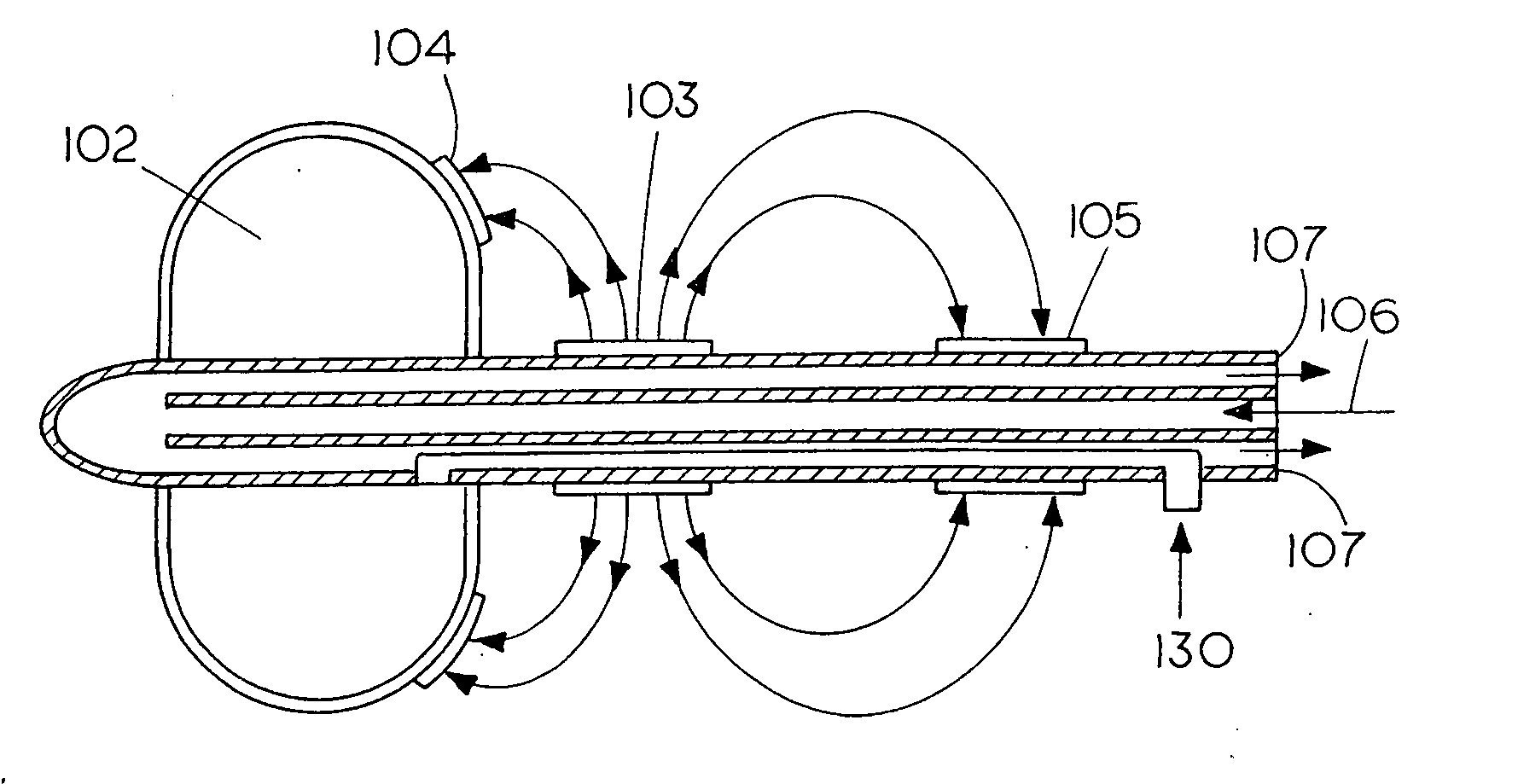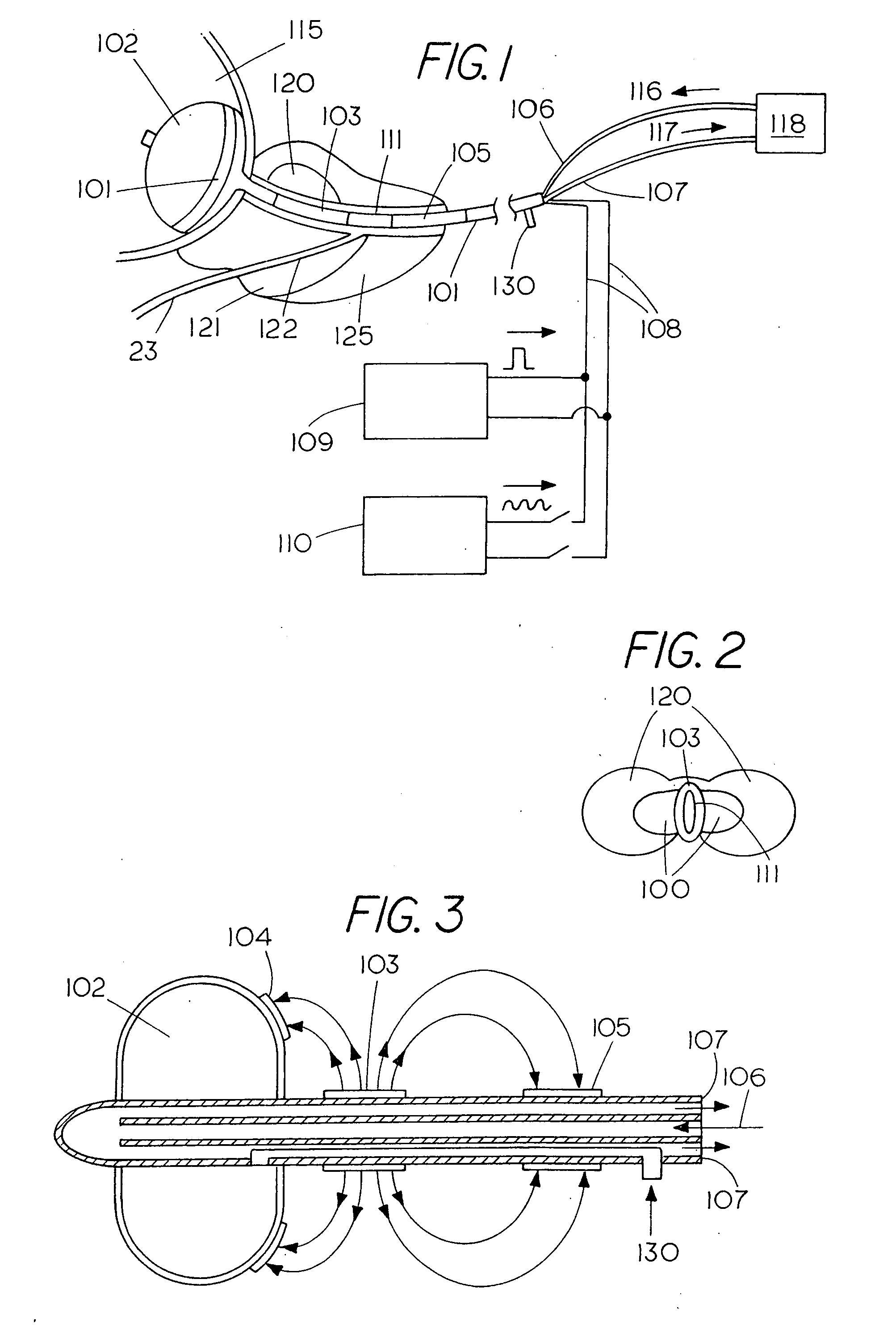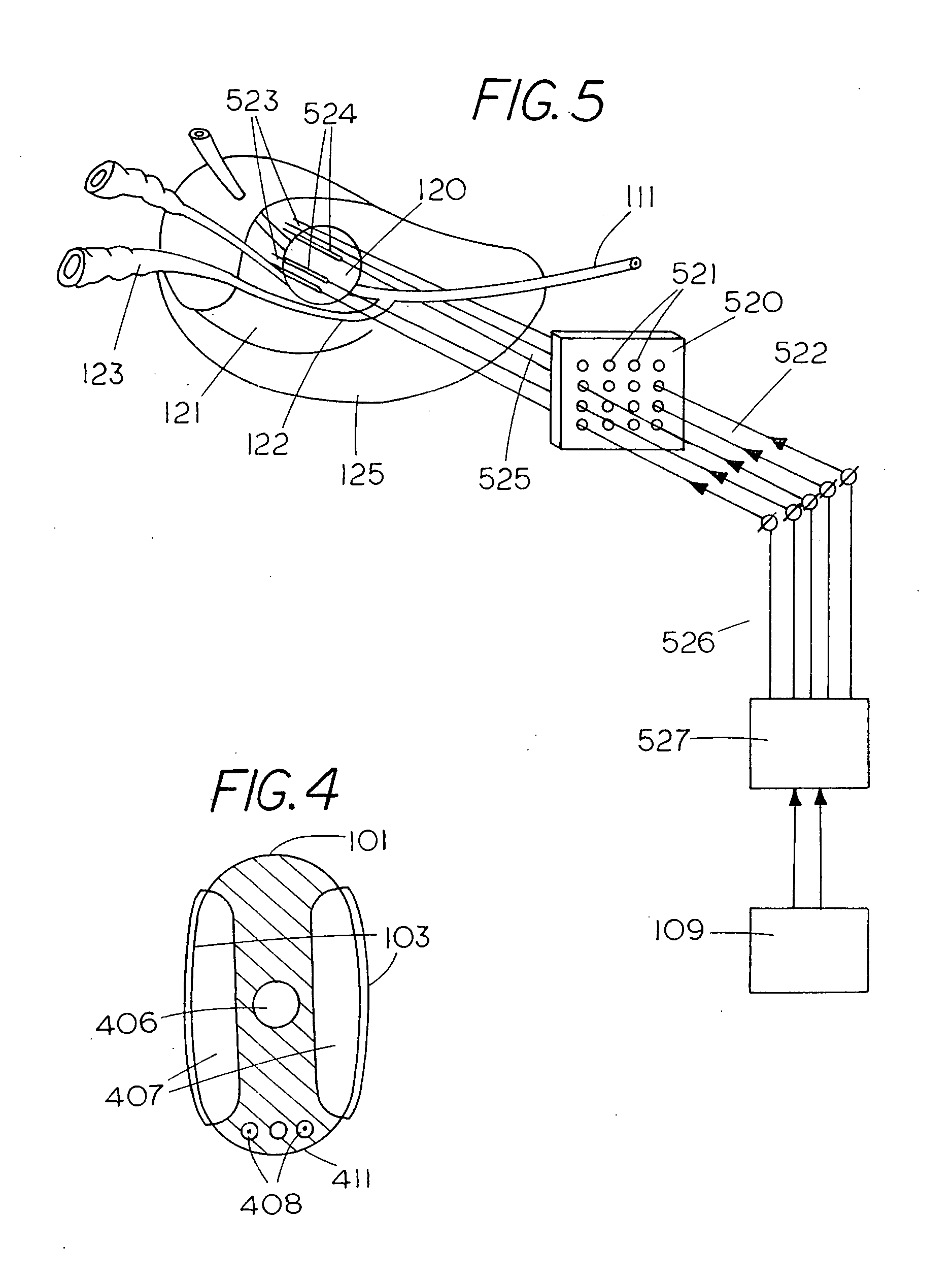Apparatus and method for treatment of benign prostatic hyperplasia
a benign prostatic hyperplasia and appendix technology, applied in the field of tissues, can solve the problems of irreversibly chemically imbalanced cells that cannot repair themselves by any spontaneous or biological process, die, and die, and achieve the effects of reducing morbidity of treatment, avoiding sloughing of necrotic tissue through the urethra, and improving control of prostate volum
- Summary
- Abstract
- Description
- Claims
- Application Information
AI Technical Summary
Benefits of technology
Problems solved by technology
Method used
Image
Examples
Embodiment Construction
[0047] In one aspect, the current invention in part stems from recognition of the fact that the effect of electroporation on tissue can be modulated by selecting a specific direction relatively to a cell for application of a pulsed electric field. For elongated cells similar to muscle fibers the length-to-width ratio can be as high as 20 to 30. For the nerve cells this ratio can be even higher. The vulnerability of cells to electroporation is different for different directions of the applied field. It depends on the size of a cell in the direction of the applied field. In other words, elongated cells can be killed with significantly lower electric field if the field is applied along the cells. If the field is applied across the cell, the cell is capable of surviving much higher amplitudes of the electric field.
[0048] In the current invention relief of symptoms is achieved by electroporation treatment, which is used to create a necrotic zone in the BPH tissue around the urethra. Nec...
PUM
 Login to View More
Login to View More Abstract
Description
Claims
Application Information
 Login to View More
Login to View More - R&D
- Intellectual Property
- Life Sciences
- Materials
- Tech Scout
- Unparalleled Data Quality
- Higher Quality Content
- 60% Fewer Hallucinations
Browse by: Latest US Patents, China's latest patents, Technical Efficacy Thesaurus, Application Domain, Technology Topic, Popular Technical Reports.
© 2025 PatSnap. All rights reserved.Legal|Privacy policy|Modern Slavery Act Transparency Statement|Sitemap|About US| Contact US: help@patsnap.com



